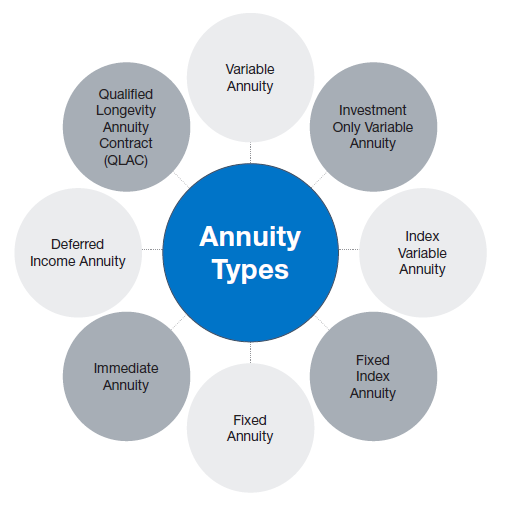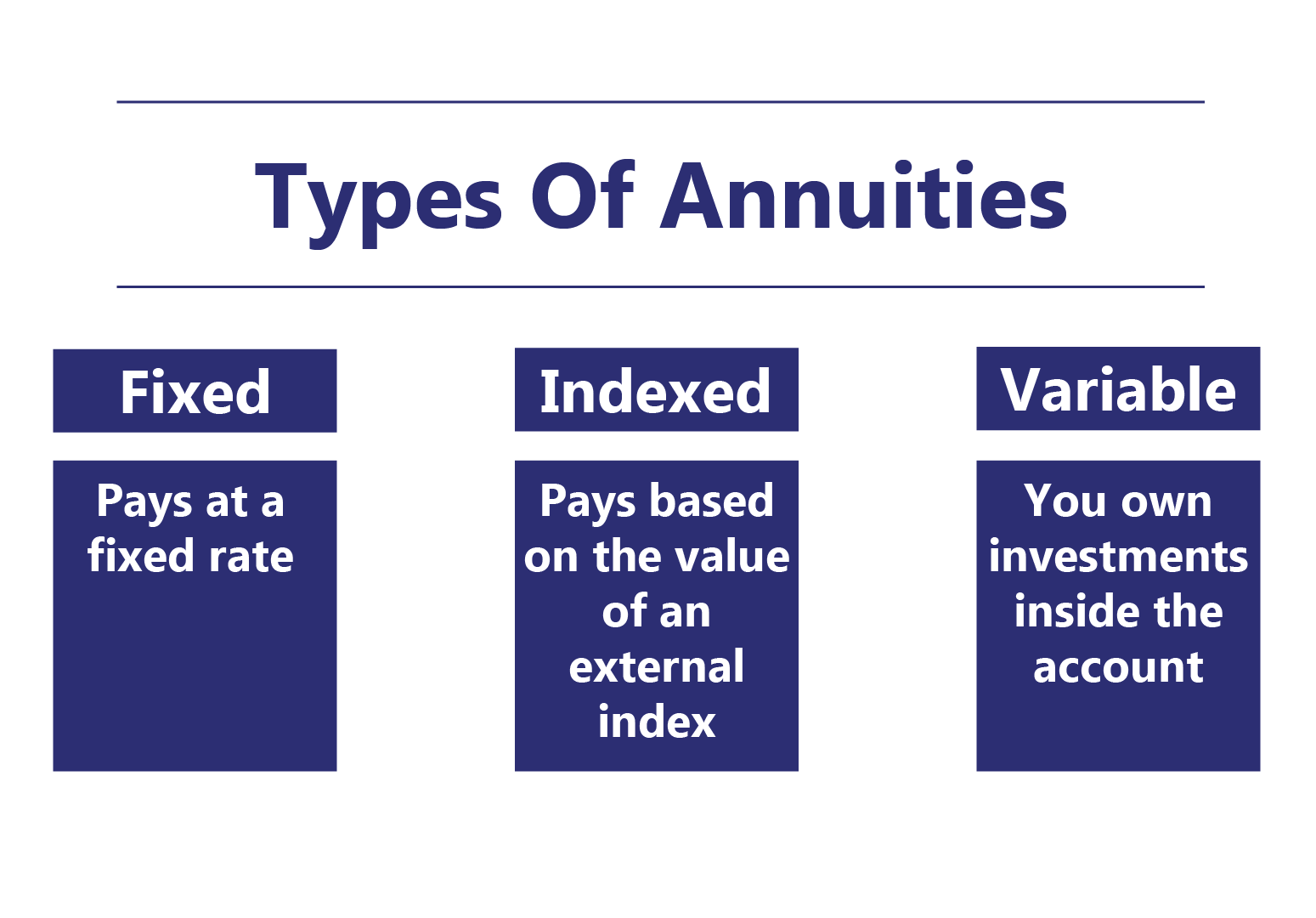All Categories
Featured
Table of Contents
The repayment may be invested for growth for an extended period of timea solitary premium postponed annuityor spent for a brief time, after which payout beginsa single premium prompt annuity. Single premium annuities are often funded by rollovers or from the sale of a valued asset. A flexible premium annuity is an annuity that is intended to be moneyed by a collection of settlements.
Proprietors of repaired annuities understand at the time of their purchase what the worth of the future capital will certainly be that are generated by the annuity. Clearly, the number of capital can not be recognized beforehand (as this depends upon the contract owner's life expectancy), however the guaranteed, fixed rate of interest a minimum of offers the proprietor some level of certainty of future income from the annuity.
While this difference seems straightforward and simple, it can significantly impact the worth that a contract owner eventually stems from his or her annuity, and it creates significant uncertainty for the agreement owner - Income annuities for retirement. It also typically has a product influence on the degree of charges that an agreement proprietor pays to the issuing insurance firm
Set annuities are often used by older capitalists that have actually limited properties yet that intend to balance out the risk of outliving their possessions. Set annuities can act as a reliable tool for this objective, though not without particular drawbacks. In the instance of immediate annuities, as soon as an agreement has been purchased, the contract owner gives up any and all control over the annuity possessions.
Analyzing Strategic Retirement Planning A Comprehensive Guide to Investment Choices Breaking Down the Basics of Fixed Annuity Vs Variable Annuity Pros and Cons of Fixed Income Annuity Vs Variable Growth Annuity Why Choosing the Right Financial Strategy Is Worth Considering Fixed Income Annuity Vs Variable Growth Annuity: A Complete Overview Key Differences Between Fixed Annuity Or Variable Annuity Understanding the Risks of Long-Term Investments Who Should Consider Fixed Vs Variable Annuity Pros And Cons? Tips for Choosing the Best Investment Strategy FAQs About Planning Your Financial Future Common Mistakes to Avoid When Planning Your Retirement Financial Planning Simplified: Understanding Variable Vs Fixed Annuity A Beginner’s Guide to Fixed Vs Variable Annuity A Closer Look at Variable Annuity Vs Fixed Annuity
As an example, a contract with a common 10-year surrender duration would certainly charge a 10% surrender charge if the contract was surrendered in the very first year, a 9% surrender cost in the second year, and so forth up until the abandonment fee reaches 0% in the agreement's 11th year. Some delayed annuity agreements include language that allows for tiny withdrawals to be made at different intervals during the abandonment period scot-free, though these allocations normally come at a price in the type of lower surefire rate of interest.
Just as with a dealt with annuity, the owner of a variable annuity pays an insurance policy company a swelling amount or series of repayments in exchange for the promise of a collection of future payments in return. As mentioned over, while a repaired annuity expands at an ensured, constant rate, a variable annuity expands at a variable price that depends upon the efficiency of the underlying financial investments, called sub-accounts.
During the accumulation phase, properties invested in variable annuity sub-accounts grow on a tax-deferred basis and are tired just when the agreement owner withdraws those incomes from the account. After the accumulation stage comes the revenue stage. In time, variable annuity properties need to theoretically increase in worth up until the contract owner decides she or he want to start taking out money from the account.
The most substantial problem that variable annuities normally present is high price. Variable annuities have a number of layers of charges and expenditures that can, in aggregate, produce a drag of as much as 3-4% of the contract's worth yearly. Below are one of the most usual charges connected with variable annuities. This cost compensates the insurer for the danger that it thinks under the regards to the agreement.
M&E expenditure charges are calculated as a percent of the agreement worth Annuity providers hand down recordkeeping and other administrative expenses to the contract owner. This can be in the kind of a flat yearly cost or a portion of the agreement worth. Management fees might be included as component of the M&E risk cost or might be analyzed separately.
These fees can range from 0.1% for easy funds to 1.5% or more for actively handled funds. Annuity contracts can be personalized in a number of ways to serve the particular needs of the contract owner. Some common variable annuity cyclists consist of ensured minimal accumulation benefit (GMAB), guaranteed minimum withdrawal benefit (GMWB), and guaranteed minimal revenue advantage (GMIB).
Understanding Retirement Income Fixed Vs Variable Annuity Everything You Need to Know About Financial Strategies What Is the Best Retirement Option? Advantages and Disadvantages of Fixed Annuity Vs Variable Annuity Why Variable Annuity Vs Fixed Indexed Annuity Is Worth Considering How to Compare Different Investment Plans: Simplified Key Differences Between Different Financial Strategies Understanding the Key Features of Fixed Vs Variable Annuity Who Should Consider Strategic Financial Planning? Tips for Choosing the Best Investment Strategy FAQs About Annuities Variable Vs Fixed Common Mistakes to Avoid When Choosing Variable Vs Fixed Annuities Financial Planning Simplified: Understanding Annuities Fixed Vs Variable A Beginner’s Guide to Smart Investment Decisions A Closer Look at How to Build a Retirement Plan
Variable annuity payments offer no such tax deduction. Variable annuities tend to be highly inefficient lorries for passing riches to the next generation because they do not take pleasure in a cost-basis change when the initial contract proprietor dies. When the owner of a taxed financial investment account dies, the cost bases of the financial investments held in the account are gotten used to show the market prices of those financial investments at the time of the owner's fatality.
Heirs can inherit a taxed investment portfolio with a "clean slate" from a tax perspective. Such is not the case with variable annuities. Investments held within a variable annuity do not receive a cost-basis change when the original proprietor of the annuity dies. This suggests that any type of gathered unrealized gains will be handed down to the annuity proprietor's beneficiaries, in addition to the associated tax obligation concern.

One substantial problem associated to variable annuities is the capacity for problems of interest that may exist on the part of annuity salesmen. Unlike an economic consultant, who has a fiduciary duty to make financial investment choices that benefit the customer, an insurance policy broker has no such fiduciary commitment. Annuity sales are extremely lucrative for the insurance coverage specialists who market them as a result of high ahead of time sales payments.
Numerous variable annuity contracts include language which places a cap on the percent of gain that can be experienced by particular sub-accounts. These caps prevent the annuity owner from totally joining a portion of gains that might otherwise be enjoyed in years in which markets generate significant returns. From an outsider's perspective, presumably that financiers are trading a cap on investment returns for the aforementioned ensured flooring on investment returns.
Breaking Down Fixed Indexed Annuity Vs Market-variable Annuity Everything You Need to Know About Financial Strategies What Is the Best Retirement Option? Pros and Cons of Annuities Fixed Vs Variable Why Choosing the Right Financial Strategy Is a Smart Choice Fixed Annuity Vs Variable Annuity: Explained in Detail Key Differences Between Different Financial Strategies Understanding the Key Features of Long-Term Investments Who Should Consider Strategic Financial Planning? Tips for Choosing the Best Investment Strategy FAQs About What Is A Variable Annuity Vs A Fixed Annuity Common Mistakes to Avoid When Planning Your Retirement Financial Planning Simplified: Understanding Choosing Between Fixed Annuity And Variable Annuity A Beginner’s Guide to Indexed Annuity Vs Fixed Annuity A Closer Look at How to Build a Retirement Plan
As noted above, give up fees can badly restrict an annuity proprietor's ability to relocate possessions out of an annuity in the early years of the contract. Even more, while most variable annuities enable agreement proprietors to withdraw a defined quantity during the build-up stage, withdrawals yet amount usually lead to a company-imposed cost.
Withdrawals made from a fixed rates of interest investment option can likewise experience a "market price modification" or MVA. An MVA adjusts the worth of the withdrawal to reflect any type of adjustments in rates of interest from the moment that the cash was purchased the fixed-rate option to the moment that it was taken out.

Quite frequently, even the salesmen who offer them do not fully comprehend just how they function, therefore salespeople sometimes exploit a purchaser's feelings to sell variable annuities as opposed to the qualities and suitability of the products themselves. Our team believe that capitalists must totally understand what they possess and just how much they are paying to possess it.
Nevertheless, the very same can not be stated for variable annuity possessions kept in fixed-rate financial investments. These properties lawfully belong to the insurer and would as a result be at risk if the company were to stop working. Similarly, any guarantees that the insurer has actually consented to supply, such as an ensured minimal revenue benefit, would be in inquiry in the occasion of a business failure.
Breaking Down Your Investment Choices A Closer Look at Variable Vs Fixed Annuity Defining the Right Financial Strategy Advantages and Disadvantages of Different Retirement Plans Why Choosing the Right Financial Strategy Can Impact Your Future Immediate Fixed Annuity Vs Variable Annuity: Explained in Detail Key Differences Between Different Financial Strategies Understanding the Risks of Variable Annuities Vs Fixed Annuities Who Should Consider Strategic Financial Planning? Tips for Choosing the Best Investment Strategy FAQs About Planning Your Financial Future Common Mistakes to Avoid When Planning Your Retirement Financial Planning Simplified: Understanding Your Options A Beginner’s Guide to Smart Investment Decisions A Closer Look at Fixed Indexed Annuity Vs Market-variable Annuity
Potential purchasers of variable annuities should recognize and consider the monetary problem of the issuing insurance company prior to entering right into an annuity agreement. While the advantages and downsides of numerous kinds of annuities can be discussed, the real problem bordering annuities is that of viability.
Besides, as the claiming goes: "Caveat emptor!" This article is prepared by Pekin Hardy Strauss, Inc. ("Pekin Hardy," dba Pekin Hardy Strauss Riches Monitoring) for informational purposes only and is not planned as a deal or solicitation for service. The info and information in this post does not make up lawful, tax, bookkeeping, financial investment, or other specialist guidance.
Table of Contents
Latest Posts
Highlighting the Key Features of Long-Term Investments A Closer Look at How Retirement Planning Works What Is the Best Retirement Option? Pros and Cons of Various Financial Options Why Fixed Income An
Breaking Down Annuities Variable Vs Fixed Key Insights on Fixed Interest Annuity Vs Variable Investment Annuity Breaking Down the Basics of Investment Plans Features of Smart Investment Choices Why Wh
Breaking Down Fixed Vs Variable Annuities A Closer Look at Annuities Fixed Vs Variable What Is the Best Retirement Option? Benefits of Choosing the Right Financial Plan Why Choosing the Right Financia
More
Latest Posts